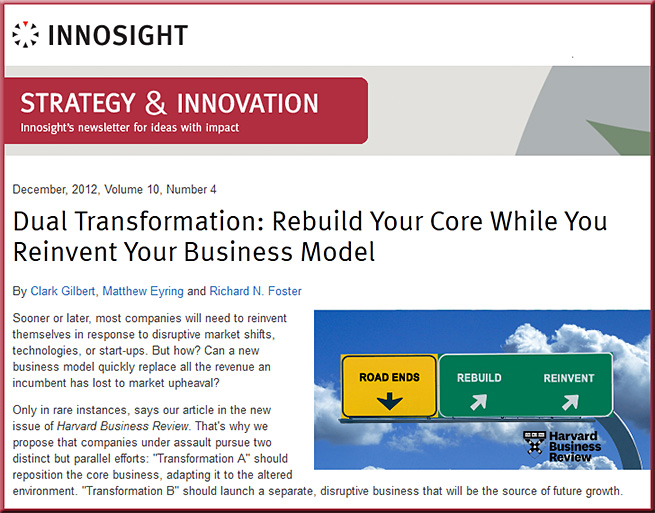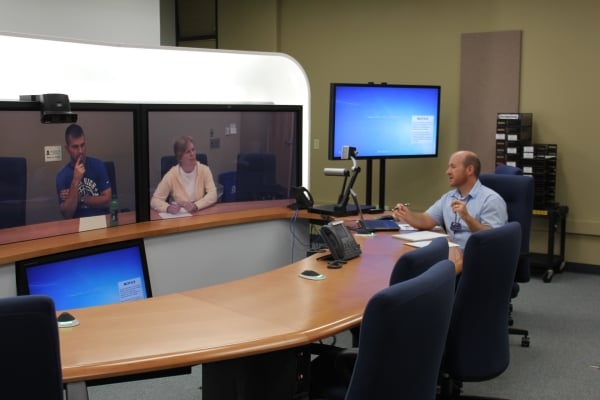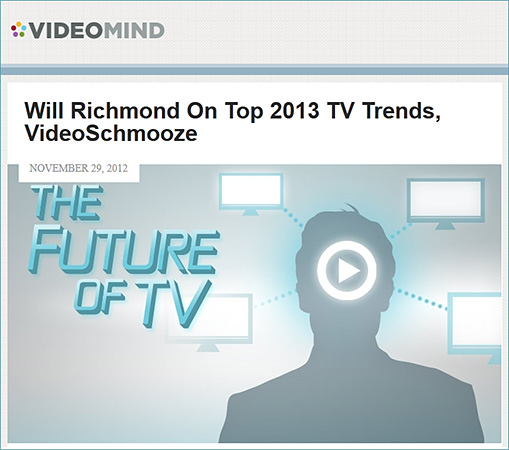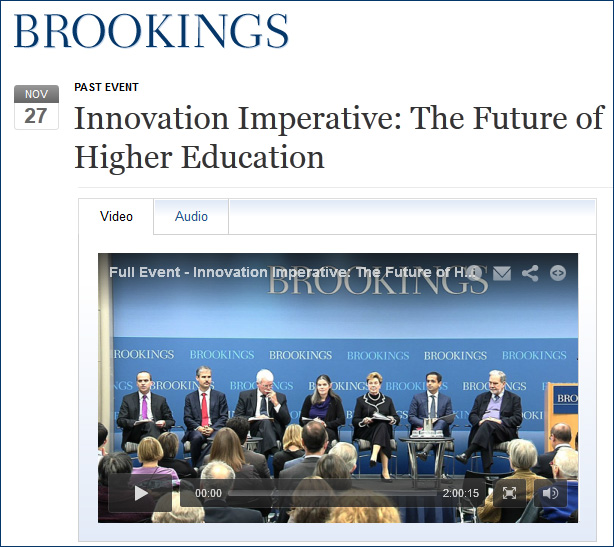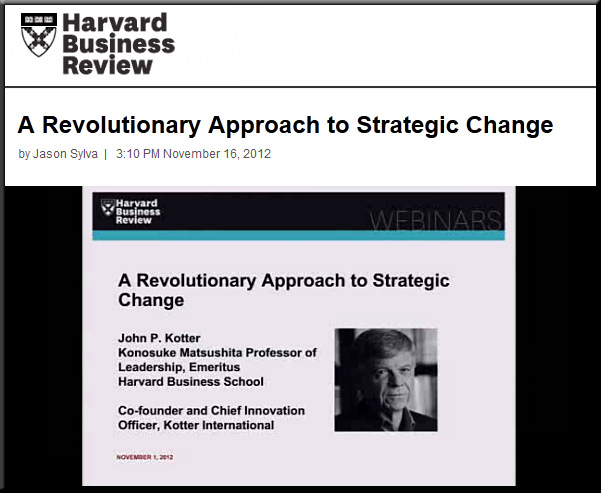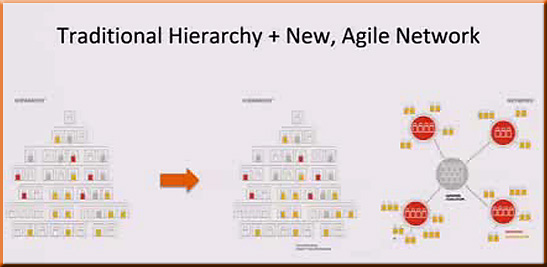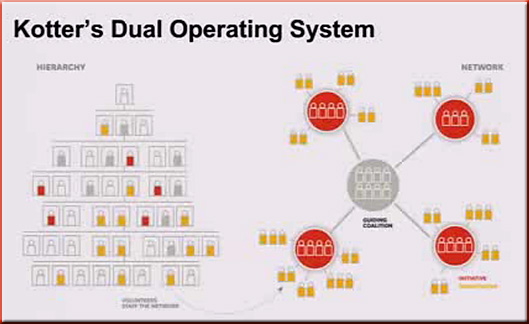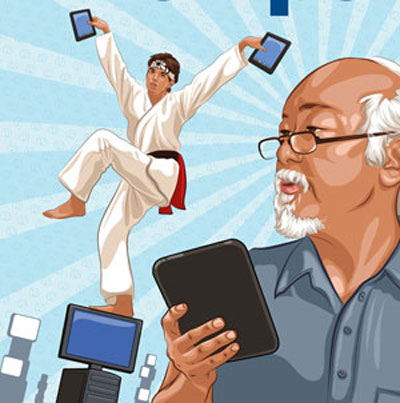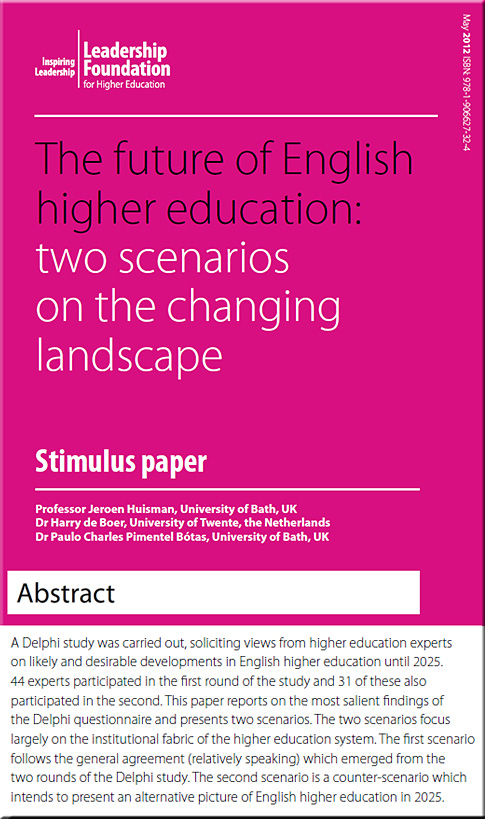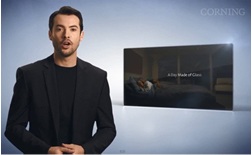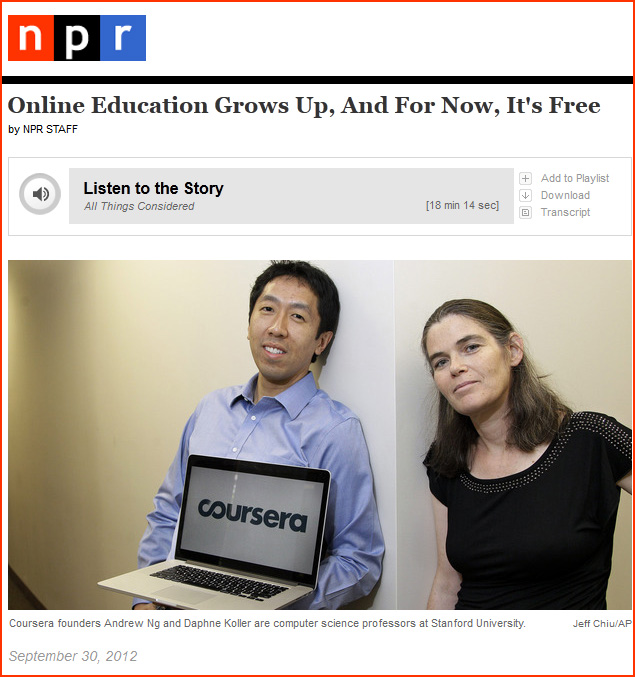10 things next gen districts will do well — from gettingsmart.com by Tom Vander Ark
Excerpt:
What will next generation districts do well? In the last week I’ve had the opportunity to discuss that question with hundreds of school board members and superintendents. Following are 10 attributes that emerged from those discussions:
Also see:
- Getting Smart connects digital learning & deeper learning in latest white paper — from Getting Smart Staff
‘How Digital Learning Contributes to Deeper Learning’ Offers a Deeper Learning Path to College & Career Readiness
.

From Boardroom to Classroom — from insidehighered.com by Alexandra Tilsley
Excerpt:
By joining forces, the three universities hope to leverage the languages they don’t all have, affording students more options, and to deepen existing programs by, for example, facilitating collaboration between instructors of the same language at different institutions.
From DSC:
Higher-level courses at smaller colleges might want to look at this as well. If an economically-feasible minimum threshold can’t be reached on one campus, open it up to a consortium of institutions (similar to Semester Online).
NGLC releases profiles of latest grantees — from nextgenerationlearning.com by Carie Page
Excerpt:
When we launched our RFP, we had a handful of names that we could use to exemplify breakthrough approaches in K-12 and higher education. Today, however, after announcing the last group of grantees for this wave in October, we aren’t just guessing at what a breakthrough model might look like. We now have 30 grantees actively developing and launching truly breakthrough approaches to education.
Explore the Portfolio
Excerpt:
With the public’s continued focus on value and affordability, higher education finds itself at a critical juncture. Cost pressures and increased global demand for access have given rise to innovations that have unleashed new delivery models into the education marketplace. Such innovation is required if universities are to thrive, compete, and bring new relevance and meaning to the value of college in the 21st century.
Also see:
- Americans believe higher education must innovate — from Northeastern News
- President: Witt must adapt to survive — from springfieldnewssun.com by Tom Stafford
Excerpt:
Liberal arts colleges that ignore market realities “absolutely won’t exist in the next decade,” Wittenberg University President Laurie M. Joyner told Springfield Rotarians on Monday. But the practical or applied liberal arts education that she predicts can sustain Wittenberg will encourage deeper connections with Springfield, she said while speaking at the Hollenbeck-Bayley Conference Center, because “our students learn better when dealing with real-world problems.” A shrinking pool of price-sensitive high school graduates has combined with a bad economy to produce “the equivalent of a perfect storm for some of us,” said Joyner, who succeeded Mark Erickson on July 1. - Surviving disruption — from hbr.og by Maxwell Wessel and Clayton M. Christensen
Excerpt:
…to meet disrupters with disruption of their own, but also to guide their legacy businesses toward as healthy a future as possible. - Sanjay Sarma appointed as MIT’s first director of digital learning — from MIT by Steve Bradt
Mechanical engineering professor will shepherd efforts to integrate elements of online education into traditional MIT courses.
From DSC:
Experimentation. Innovation. Experimentation. Innovation. Fail. Fail. Succeed. Fail. Succeed. Fail.
From DSC:
Mr. Rob Bobeldyk and I were brainstorming last week about the need to create A Center for Innovation — a smaller organization within our overall organization — that can be far more nimble and responsive. Such a Center could be:
- Constantly pulse-checking the relevant landscapes (technological, pedagogical, business models, other)
- Researching potential approaches
- Experimenting
- Innovating
- Failing
- Succeeding some of the time — and handing off/transitioning the projects that gain traction to others in the larger organization (which may require building some new groups and/or departments at that point)
As I discovered HBR’s interview with John Kotter today, I felt our idea/direction/brainstorming is heading in the right direction!
.
That is, we are trying to keep the plane in flight while making some significant changes. Put another way, we are trying to keep the bread and butter in tact while experimenting with new business models and/or new products and services.
Kotter’s “Dual Operating System” affirms that a new/smaller/more nimble organization is appropriate. Here are some graphics of Kotter’s “dual operating system”:
.
.
.
The work of Christensen, Horn, and Johnson is highly-relevant here as well:
- Disrupting Class
- Disrupting College
- The Innovator’s Dilemna
Addendums on 11/20/12:
.
Reflecting on the Top IT Issues of 2012 — from campustechnology.com by Dian Schaffhauser
- Updating IT professionals’ skills and roles to accommodate new technologies and changing IT delivery models
- Supporting IT consumerization and bring-your-own device programs
- Developing a cloud strategy
- Improving the institution’s operational efficiency through IT
- Integrating IT into institutional decision-making
- Using analytics to support the important institutional outcomes
- Funding IT initiatives
- Transforming the institution’s business with IT
- Supporting research with high-performance computing, large data, and analytics
- Establishing and implementing IT governance throughout the institution
Also see:
Involving students in IT — — from campustechnology.com by Keith Norbury
IT shops are turning to students to staff help desks, troubleshoot, and more. For schools, it’s a way to cut costs; for students, it’s a learning experience and a pathway to employment.
.
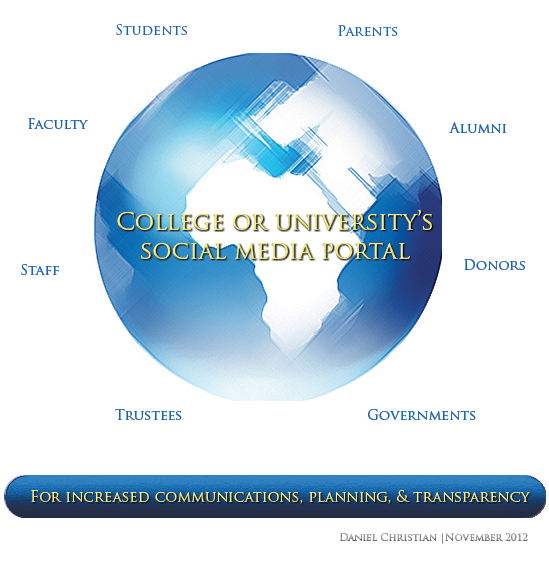
From DSC:
.
Could we use social media/tools in order to get input from all of the constituencies of a
college or university? Such input could be used to create innovative ideas,
establish buy-in, and build future strategic direction/vision.
What would that look like? Work like?
I wasn’t sure where to put the workplace here…but certainly that is also a key piece of our future.
.
Business model innovation: A blueprint for higher education — from Educause by Christine Flanagan
Excerpt:
Business model innovation is one of the most challenging components of 21st-century leadership. Making incremental improvements to a business model—creating new efficiencies, expanding into adjacent markets—is hard enough. Developing and experimenting with new business models that truly transform how an institution delivers value (while continuing to drive the performance of the current business model) is exceptionally difficult. Yet nowhere is the imperative for business model innovation more prevalent or more relevant than in higher education, which is under intense scrutiny and facing rising costs and potential disruption from all angles.
To compete in a world where the shelf life of business models is shortening, higher education leaders need the tools, skills, and experience to envision, test, and implement new business models. They must believe in the power of experimenting, in the real world, with a network of collaborators who have the audacity to change everything. As the legendary innovation mastermind Clayton Christensen says: “You don’t change a company by giving them ideas. You change them by training them to think a different way.”1
Why is American Higher Education so averse to change? — from Jeff Selingo
Excerpt:
In my 15 years of reporting on higher education—and especially in the last year as I have reported for my forthcoming book on the future of higher education—colleges and universities have come to remind me of other American content industries that have been disrupted in the last decade: newspapers and magazines, music, and book publishing. In many ways, colleges and universities are following the same playbook:
From DSC:
I hope that higher education learns from what the Internet did to other industries. I hope we can reinvent ourselves, stay relevant, and ride the wave to create WIN-WIN situations…and not get crushed by it.
.
From DSC:
Whether one agrees or not with the scenarios…what’s important here is to promote discussions of the future of higher education across the world. Developing scenarios is an excellent way to jump start such conversations, contribute to strategic plans/visions, and develop responses to the changing higher education landscape.
The power and possibility of mobile learning — as cross posted from evoLLLution.com (for LifeLong Learning)
Daniel S. Christian | October 2012
As I sat down to write about mobile learning, I struggled with narrowing down the scope of what I was going to attempt to address. Which angle(s) should I take?
And then I reflected on my morning so far. I helped my daughter wake up to the sounds of a song coming from my iPhone. She opened one eye, then the other, and soon, she was dancing around the room. Success!
I then proceeded to listen to my iPhone as I drove my car into work – it gave me the energy I needed to start my internal engines. (By the way, the idea of automobile-based technologies continues to grow, opening up further possibilities; but that’s a topic for another day.)
Then I caught up with a friend for coffee and he reached for his iPad. He showed me an app for the local Art Prize competition that’s currently going on in our area. He mentioned that if a person wasn’t in the immediately vicinity of the Art Prize event, that person could not vote on any of the pieces. However, if the GPS-based coordinates were within the approved range, a person could use that app to:
- Vote on which pieces of artwork that they liked
- Find out where the artwork was located (at numerous locations on a map)
- Learn more about the pieces themselves – what the pieces were made of, hear the artists’ thoughts on why they created what they created, etc.
So by the time I pulled up to my PC at 9:00am, I had already been positively impacted by mobile technology in several ways. The common words and phrases that are often used to describe mobile learning and mobile technologies rang true and popped back into my mind: ubiquitous, always on, always connected, 24x7x365, convenient, etc.
As I enjoy peering into the future as well as pulse checking a variety of items, I would like to ask the following questions concerning the potential power and possibility of mobile learning as well as the relevant, emerging set of technologies that enable it:
- Q: What happens when the technologies behind IBM’s Watson and Apple’s Siri get perfected and integrated into learning-based products and services? What types of devices will be able to tap into those products and services?
A: IBM’s Watson beat the best human players in a game of Jeopardy and is now being used as a data analytics engine for the medical community, wading through terabytes of patient healthcare information and research data in order to determine how best to treat illnesses. So, such technologies hold some serious promise in terms of at least addressing the lower to mid-levels of Bloom’s Taxonomy. For 2012, tablets, smart phones, laptops, notebooks would be likely candidates of accessing these types of products/services. But we are just at the embryonic stages of the Smart/Connected TV, and I have it that such a device will become an important and commonly-used mechanism for accessing such cloud-based applications and services in the future.
. - Q: Will students of all ages have access to their own virtual tutors so to speak? From any device at any time?
A: Yes; this is highly likely, especially given the current (and increasing) levels of investments being made in educational technology related areas. It’s very feasible to think that Apple, IBM, Google, Microsoft, McGraw-Hill, Pearson, or some other organization with deep pockets will develop such virtual tutoring products and services.
. - Q: What will happen when a virtual tutor is unable to resolve or address the student’s issue to the student’s satisfaction? Will the student be able to instantly access a human tutor – with the option of keeping the existing work/issue/problem visible to the human tutor?
A: Yes, again…highly likely. This will open up new opportunities for faculty members, teachers, instructors, trainers, and tutors. Getting experience in teaching online is a solid career move at this point in history. (Also relevant will be those people creating applications and technically supporting them. An understanding of web-based videoconferencing and collaboration tools will be helpful here.)
. - Q: How will the convergence of the television, the computer, and the telephone impact what can be done with learning-based applications and experiences?
A: We are just beginning to see the ecosystems changing and adapting to deal with the convergence of the television, the computer, and the telephone. The Smart/Connected TV – along with “second screen” based applications – is being driven by innovations involving the entertainment, marketing, and advertising industries. But it’s not a stretch to think that educationally-related content will be right behind such innovative solutions.
. - Q: How will the multiple screens phenomenon affect how content can be consumed and discussed?
A: I created a couple of graphics along these lines that attempt to capture a potential vision here. I call it “Learning from the Living [Class] Room,” and it continues to develop in front of our eyes. We could be watching a “lecture” on a big screen and simultaneously interacting with people throughout the world on our smaller screens.
![The-Living-Class-Room-Daniel-S-Christian---July-2012 The Living [Class] Room -- by Daniel Christian -- July 2012 -- a second device used in conjunction with a Smart/Connected TV](http://danielschristian.com/learning-ecosystems/wp-content/uploads/2012/07/The-Living-Class-Room-Daniel-S-Christian-July-2012.jpg)
.

- Q: How will mobile conferencing affect what can be achieved?
A: Mobile-based conferencing will provide 24x7x365 opportunities for learning – and communications – to occur. Such technologies have applications even in more traditional face-to-face classroom settings. For a few possibilities here, see how mobile technologies are used in this vision by Intel as well as in this vision by Corning.
.
.
- Q: What sort of creative doors are opened when a story can be told across a variety of “channels” and means? And what sorts of skill sets do we need to start building – or continue to build – in order to help students find work in these emerging fields?
A: Create a Google Alert on transmedia and/or transmedia-based storytelling and you will get a sense of what’s happening in this arena. There will be huge opportunity for creative, innovative folks out there! Being versed in new media would be a solid idea if one hopes to pursue careers in these burgeoning fields. That is, building at least a rudimentary skill set of how to creatively use text, graphics, animations, digital audio, digital video, and interactive programming to deliver and obtain information would be very beneficial here.
. - Q: What types of analytics will be tracked and fed into one’s cloud-based learner profile?
A: It will depend upon where we want such technologies to take us. However, think about the applications and implications of this approach if a web-based profile were used to:- Feed a workplace-based exchange – matching buyers and sellers of services
- Inform a learning agent on which topics/disciplines that person wants to learn more about – helping that person obtain a highly-personalized, customized, relevant, engaging, productive learning experience with a solid ROI
- Inform a cloud-based app on what prior knowledge one has and where to begin the “next lesson”
.
- Q: Will courses become apps? Will what we know of TV programs become apps and, if so, how will that affect what each of us can contribute to our own communities of practice?
A: Just as the web has enabled individuals to deliver their own podcasts, information, etc. – essentially becoming their own radio stations to a degree – the ecosystems being built up around the Smart/Connected TVs could help each of us become our own TV station. The potential is huge in terms of further developing and sharing knowledge within communities of practice.
. - Q: Will educational gaming dove-tail nicely with mobile learning and emerging technologies such as augmented reality, 3D, and connected television?
Yes, the synergies and foundational pieces are already coming into place.
. - Q: How will the bring-your-own-device (BYOD) situation affect what can occur in the face-to-face classroom?
A: Students will be able to seamlessly and efficiently contribute content to the discussions in a face-to-face classroom without breaking the flow of the classroom. An example graphic can be found here.
The topics and potential routes that additional articles could take are almost endless. But I think it’s safe to say that mobile, lifelong learning is here to stay.
Listed below are some recent articles and resources if you are interested in pursuing the topic of mobile learning. I also have a section on my Learning Ecosystems blog dedicated to mobile learning.
If you are interested in what I’m calling Learning from the Living [Class] Room, you might be interested in these postings.
Some recent articles/resources regarding mobile learning:
- The 20 best blogs about mobile learning – 9/21/12 item from onlinecolleges.net
- New guide! Mobile devices for learning: What you need to know – September 2012 from edutopia.org
- 10 big (but never discussed) problems with mobile learning – 9/13/12 item from edudemic.com by Jeff Dunn
- The Mobile Learning Ecosystem I – 10 Important Questions – 9/5/12 item from the Upside Learning blog by Abhijit Kadle
- 25 apps for global mobile learning – from asiasociety.org by Honor Moorman and Heather Singmaster
- 6 ways the iPhone changed Higher Ed — 7/1/12 article at insidehighered.com by Joshua Kim
- What the iPad has done to education – 9/22/12 article at teachthought.com by Terry Heick
- 5 device frontiers that mobile developers think are coming — from fool.com by Evan Niu
- Doing the impossible: Helpful tool [Raptivity] lets you track and assess mobile learning – 7/16/12 item from edudemic.com by Jeff Dunn
Addendum:
- Best iOS apps for mobile learning — from onlineuniversities.com
- Why mobile will transform learning: The classroom of the future — from Qualcomm.com
From DSC:
Sending a special thanks out to Dr. Kate Byerwalter,
Professor at Grand Rapids Community College for this resource!
Also see:
- The crisis in higher education — from technologyreview.com by Nicholas Carr
Online versions of college courses are attracting hundreds of thousands of students, millions of dollars in funding, and accolades from university administrators. Is this a fad, or is higher education about to get the overhaul it needs?
. - The hybrid classroom: How online learning can cut costs by 57% — from edcetera.com by David LaMartina









